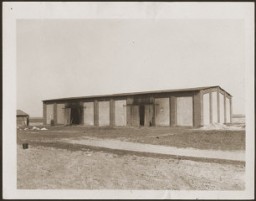You searched for: 跨境电商系统定制开发【TG���������@EK7676】平台包网搭建跨境电商系统定制开发【TG���������@EK7676】平台包网搭建1a8PbYSDcG
<< Previous | Displaying results 26-50 of 652 for "跨境电商系统定制开发【TG���������@EK7676】平台包网搭建跨境电商系统定制开发【TG���������@EK7676】平台包网搭建1a8PbYSDcG" | Next >>
-
"Degenerate" Art
ArticleNazi leaders sought to control all spheres of German society, including art. They labeled art that did not meet the regime's criteria "degenerate." Learn more.
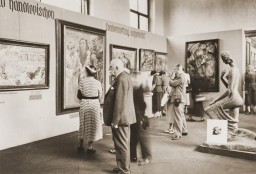
-
Salzburg Displaced Persons Camps
ArticleAfter WWII, many Holocaust survivors, unable to return to their homes, lived in displaced persons camps in Germany, Austria, and Italy. Read about Salzburg DP camp.
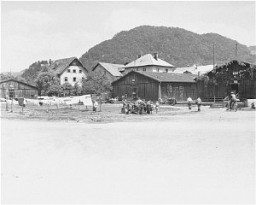
-
The Nazi Party
ArticleThe National Socialist German Worker’s Party, also known as the Nazi Party, was the far-right racist and antisemitic political party led by Adolf Hitler.
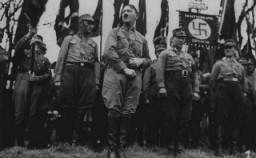
-
World War II in Europe
ArticleWorld War II lasted from 1939 to 1945, when the Allies defeated the Axis powers. Learn about key invasions and events during WWII, also known as the Second World War.
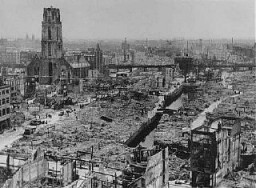
-
The Nazi Kripo (Criminal Police)
ArticleThe Nazi Kripo, or Criminal Police, was the detective force of Nazi Germany. During the Nazi regime and WWII, it became a key enforcer of policies based in Nazi ideology.
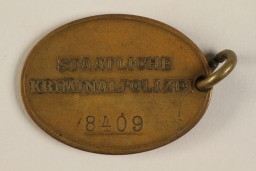
-
Law on the Head of State of the German Reich
ArticleThe Law on the Head of State of the German Reich was the last step in destroying democracy in interwar Germany and making Adolf Hitler a dictator. Learn more.
-
Zeilsheim Displaced Persons Camp
ArticleAfter WWII, many Holocaust survivors, unable to return to their homes, lived in displaced persons camps in Germany, Austria, and Italy. Read about Zeilsheim DP camp.
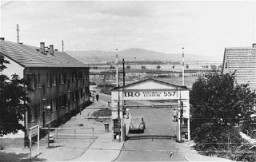
-
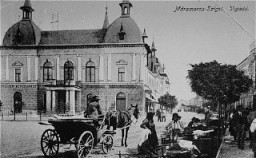
-
Headphones
ArtifactHeadphones used by defendant Hermann Göring during the International Military Tribunal. Headphones like these enabled trial participants to hear simultaneous translation of the proceedings.
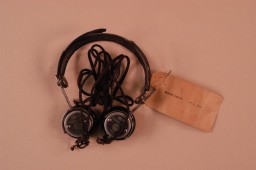
-
Scrapbook
ArtifactMany observers at the International Military Tribunal (IMT) at Nuremberg, aware of the historic nature of the trial, created scrapbooks to preserve their own record of the Nuremberg court. First Lieutenant Herman E. Klappert, Jr. was a photographer with the U.S. Army Signal Corps who assembled three such scrapbooks. Klappert's albums consist almost entirely of photographs that he printed himself. Also included in the albums are original autographs from the defendants and other principal figures at the…
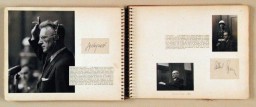
-
Santa Maria di Bagni Displaced Persons Camp
ArticleAfter WWII, many Holocaust survivors, unable to return to their homes, lived in displaced persons camps in Germany, Austria, and Italy. Read about Santa Maria di Bagni DP camp.
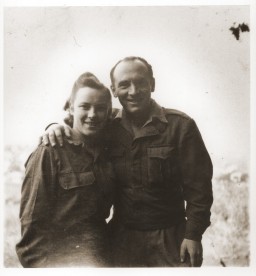
-

-

-
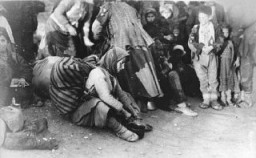
-
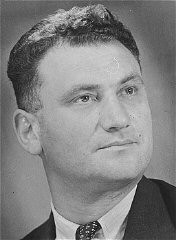
-
Adolf Eichmann
PhotoAdolf Eichmann, SS official in charge of deporting European Jewry. Germany, 1943.
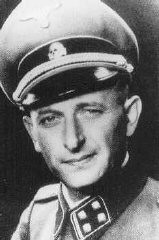
-
Antisemitic graffiti in Danzig
PhotoAntisemitic graffiti on a Jewish-owned shop that has been forced to close. Danzig, 1939.
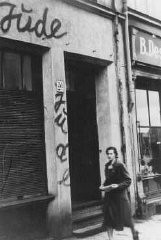
-
Hannah Szenes
PhotoJewish parachutist Hannah Szenes at Kibbutz Sedot Yam, a communal agricultural settlement. Palestine, 1942.
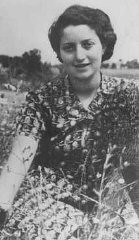
-
Election poster
ArtifactElection poster reading "The People Vote Listing One: Nationalsocialism," 1932-1933
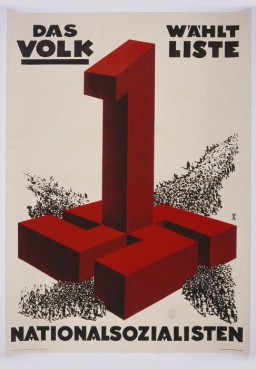
-
Vidkun Quisling
PhotoVidkun Quisling, pro-German Norwegian Fascist leader. Pictured here addressing supporters of his Norwegian Nazi party at a rally. Oslo, Norway, August 1941.

-
Aftermath of a pogrom in Iasi
PhotoPolice force Romanian Jews, survivors of a pogrom in Iasi, to board a train during their expulsion from Iasi to Calarasi. Iasi, Romania, late June 1941.
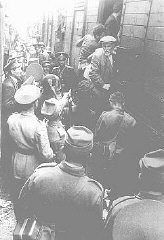
-
Ruins of a Polish town
PhotoA Polish town in ruins after six years of war and German occupation. Poland, 1945.
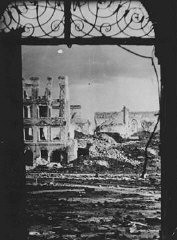
-
Site of the Gardelegen atrocity
PhotoBarn on the outskirts of the town of Gardelegen that was the site of the massacre of over 1,000 concentration camp prisoners. Germany, April 16, 1945.
